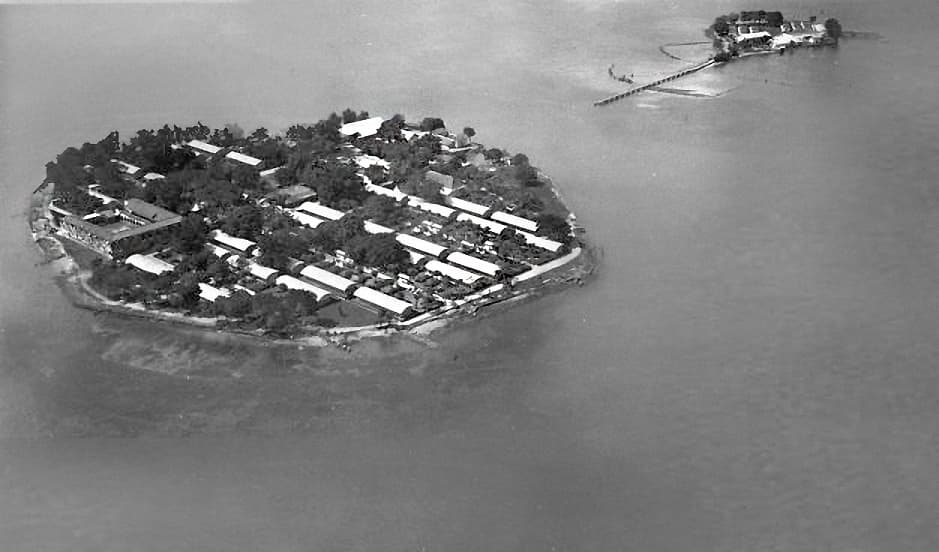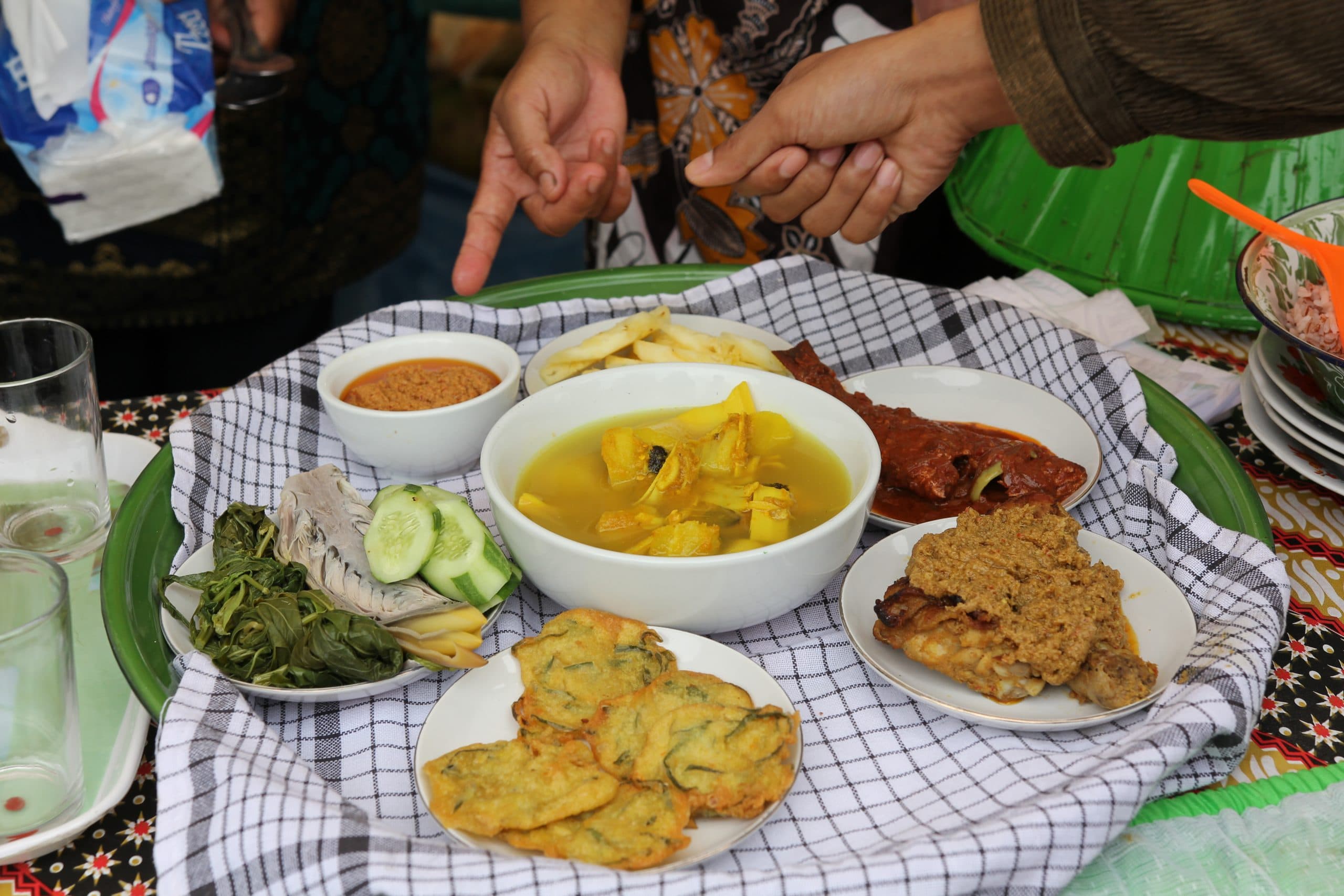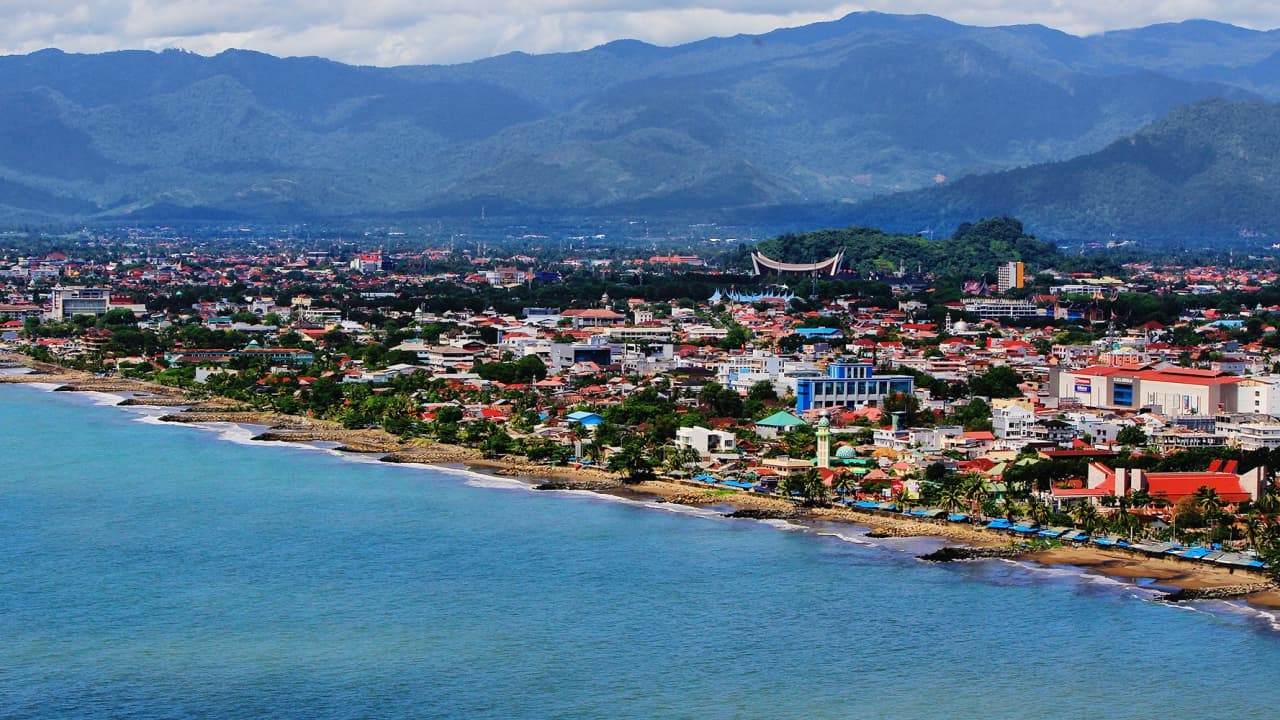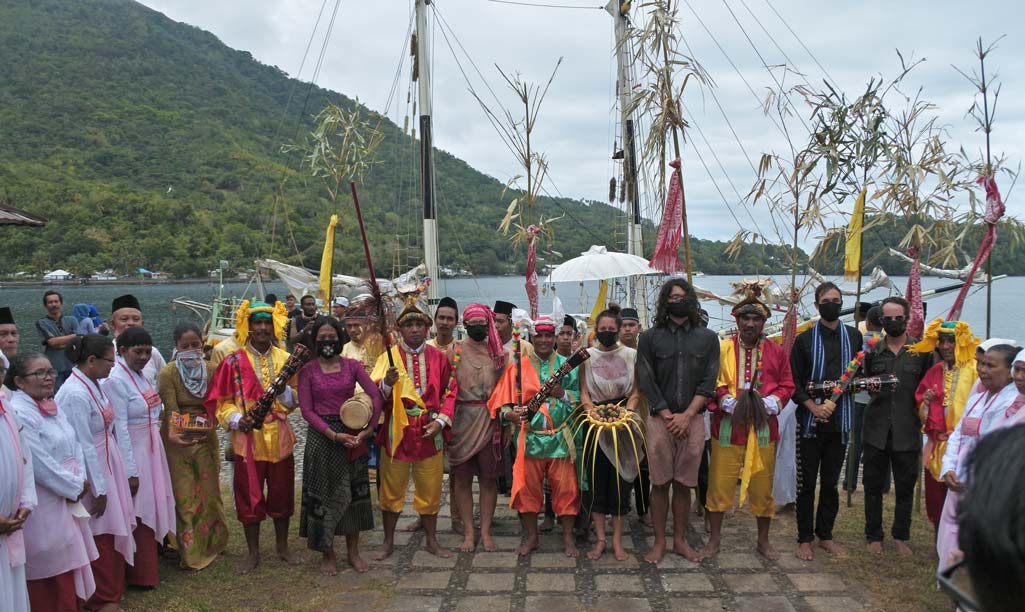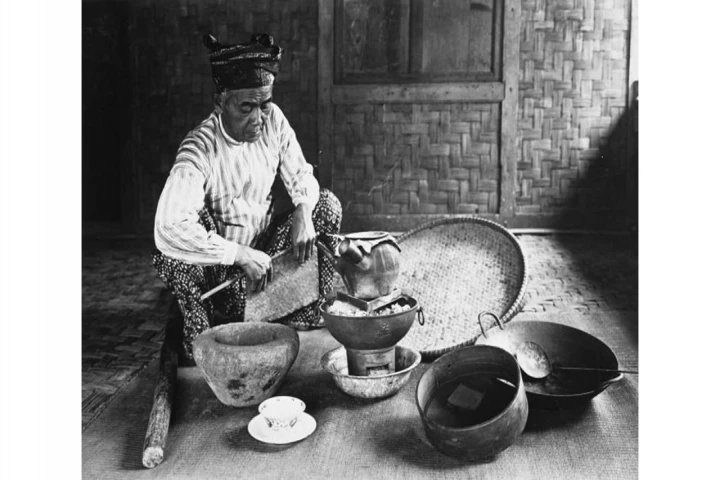
Traditional medicine, which refers to the practice outside the modern medical treatment, is still practiced today and is often found in rural areas. It can be found in Pangkajene and Islands (Pangkep), one of the regencies in South Sulawesi, around 50 km in the north of Makassar. Sanro, the term for the traditional healer, still becomes people's choice for treatment.
The term sanro is generic, but it has different specifications of treatments. For instance, sanro pammana (handling childbirth) or sanro pangnguru (doing massage as a treatment). The terms are based on medicine skills. However, not all sanros use spices for the media of treatment.
The writing includes two sanros who use spices for their media of treatment. Both of them have internal disease treatment specifications. However, uniquely, they have different treatment media. Internal diseases refer to the decrease of body endurance that postpartum women commonly experience. In the local language, the Makassarese, it is called bingkasa.
The first sanro is Rosdiana, often called Daeng Caddi, who is now 58 years old. For more or less 30 years, she has been trusted as the traditional healer in her village, Baru-Baru Tangga, Bonto Perak, Pangkajene, Pangkep. Like other sanros, she never introduces herself to people. Instead, the information spread from mouth to mouth. Daeng Caddi obtained her skill from her grandmother named Tipa, who had become a sanro for a long time.
After Tipa passed away in 1990, the people believed that one of her descendants would proceed with the journey. According to Daeng Caddi, she revealed that her grandmother wanted to bequeath her treatment knowledge prior to her death, but Daeng Caddi thought it was nothing. However, Daeng Caddi finally realized that her grandmother had chosen her along her journey, and her siblings supported her.
The second sanro is Hj. Badaria, who is now 73 years old. Her grandmother also bequeathed the inheritance process of her medicine skill. She said that her grandmother came into her dream and blew into her mouth. That's how the traditional treatment process began after her grandmother passed away.
In a more profound understanding, it appears to be a commonality of the traditional treatment inheritance legitimacy experienced by the sanros. First, the inheritance occurred only to family kinship or blood ties. Second, the rise of social legitimacy in the people's minds that the heirs of the treatment are not far from the primary source. Third, there are mystical events.
Both Daeng Caddi and Hj. Badaria said they experienced mystical events when they first obtained the treatment inheritance. Then, slowly, they realized that their experiences were a choice to devote to the community in helping the healing process.
Spices Behind the Massage Oil
In undertaking her practice, Daeng Caddi makes her own massage oil concoction. She did it after she ran out of her grandmother's oil heritage. As she was clueless about what kind of spices were in the concoction, Daeng Caddi dared herself to break the bottle and examine the remaining concoction. Fortunately, the fermented spices were not damaged, and she could still recognize them.
Based on that examination, Daeng Caddi made the massage oil. She included spices, such as pepper, shallot, clove, nutmeg, and cinnamon. Another ingredient includes elephant grassroots. The spices were fried with a certain level of doneness so that they would be fermented well when mixed with olive oil, coconut oil, and eucalyptus oil.
Daeng Caddi uses that massage oil in running the treatment practice in her house. The patients consist of people who live around the place and outside the village. The information spread from mouth to mouth from the patients who received the treatment.
In September 2020, I was involved in the research process entitled Menghambur Menyigi Sekapur Sirih, a pre-event program of Makassar Biennale 2021. Along with the working team, we reviewed the track records of Daeng Caddi's treatment. The report is in the form of a research result compiled in an anthology book Ramuan di Segitika Wallace, Siasat Pengobatan Warga Selat Makassar, Laut Flores, hingga Teluk Cendrawasih (Makassar Biennale: 2019). Besides the written report, there is also a video series posted on the YouTube channel Makassar Biennale.[1]
Still in the same year, in a different month of June 2020, through the open call program 'Karya Normal Baru' initiated by Jakarta Biennale, Biennale Yogyakarta, and Makassar Biennale, I got the support to finish the documentary Hikayat Pengobatan Bedak Basah, which reviewed the track records of Hj. Badariah with her daughter, Hukmawati.[2]
To understand deeper the traditional treatment track records of Daeng Caddi during the research period, she showed the place she bought spices, not far from her house, where the spices were very close to their lives. If the local grocery store near her house was out of spices, Daeng Caddi went to the traditional market.
Looking at the existence of spices in the traditional treatment practice is an exciting thing that reminds us of the struggle of spices in the past. Generally, spices are the kind of ingredients that are usually used as a seasoning in the kitchen. On the other hand, spices have another function as a mixture of the treatment concoction ingredients. It is not new, for spices have long been used as a medicine. One of them is the archaeological discovery of the Mesopotamia site, a pot of cloves that is approximately existed since 1721. In Daeng Caddi's hands, spices become a compound that connects her massage to the patients.
In handling patients with bingkasa, she first massages them three times on the belly. Next, the patients are equipped with eucalyptus oil that Daeng Caddi has blown. Eucalyptus oil becomes the supply for the patients to continue the treatment by smearing it on the belly until they slowly get well. Besides patients with bingkasa, Daeng Caddi also treats hemorrhoids and children with a stomachache.
The treatment media and handling method are the same. I once brought my three-year-old toddler, who had a stomachache. Daeng Caddi's examination revealed that my child suffered from organ shifting behind the placenta. In Makassaresse term it is called simula jaji. Therefore, Daeng Caddi underwent a belly massage and returned the organ to its original position. She annunciated that it's normal for children because they actively move when playing.
Wet Powder and Drink Concoction
Although the medicine specification is the same, Hj. Badaria uses wet powder and drink concoctions for her patients with bingkasa. However, not all patients are treated with those two treatments. There is a time when she only applies the wet powder if Hj. Badaria thinks that the bingkasa is not severe.
The case is different when the patient is in a severe condition. The severity condition of the patient is determined by the explanation from the patient who feels the symptoms. Hj. Badaria asks the patients first to explain their situation to conclude the severity of the bingkasa, aside from the external and internal or mystical examinations.
The media treatment package of the wet powder and drink concoction is only for patients with severe bingkasa. The patients are equipped with wet powder that must be smeared all around the body in the morning and afternoon. While the drink concoction is advised to be consumed in the morning or, if the patients feel that their body conditions are weak, they can serve the drink as many as they need and use it as a substitute for mineral water.
There are several spices behind the making of the wet powder, including nutmeg, pepper, sesame, turmeric shallot, garlic, and vanilla. While in the drink concoction, there is the composition of sappan wood, cinnamon, lemongrass root, and black cumin. The process found that the spices were bought from the traditional market. However, she needs to order rare spices, like sappan wood, from the family network who can get the wood.
Where are the Spices from?
In his book Asia Tenggara dalam Kurun Niaga 1450-1680 Jilid 2: Jaringan Perdagangan Global (Pustaka Obor Indonesia: 2015) [Originally published as Southeast Asia in the Age of Commerce, 1450-1680. Vol. 2: Expansion and Crisis], Anthony Reid wrote that the people of Ternate and Tidore told the Portuguese that their ancestors knew the value of clove from the Chinese. The history dates to the 14th century.
The spice export from Maluku to China and Europe suddenly increased around the year 1400 and slowly expanded along the 5th century, although it probably hid the decrease in the middle of the century and the increase at the end of the decade. [3] Looking at the struggle of the time since the 14th to 15th centuries, it appeared to be the new era of the spice global trade network, where Maluku was the center.
Although in Christian Pelras' note, he pointed out that the leading export product in South Sulawesi was rice. Pinto, a Portuguese explorer, said that although the number of rice exported to South Sulawesi since 1511 was not significant, it could meet the Portguese's needs in Malacca.[4]
Pelras also noted that aside from exporting rice, farmed animals, and hunted animals, spices also came from the surrounding island, like sandalwood from Kail, Palu, and Bima, and agarwood and sappan wood from Sumba.
The peg of the era changed from the century shifting that is still ongoing today. Although it no longer dominated the trade traffic, the need for spices never subsided. Lokadata.Id's reportage[5] entitled Peluang Bisnis Perdagangan Antar Daerah July 2021 edition released ten primary commodities: food and beverage industry, tobacco processing, means of transportation, metal industry, pharmacy, machine, company service, information service, automotive trade, and fishery.
The quiet route of the spice trade became the turning point of the glorious era in the past with a strong aroma traversing the continent and detected by the kings and the officials of Europe, Arab, Africa, Asia, and America. Concerning the aroma, it moved the Portuguese, Dutch, and English fleet to sail through the sea to find the Spice Islands.
The Glory of Spices and Healing Rites
The traditional treatment is a form of cultural achievement which grows among the community. The sacredness is not separated as a healing suggestion from the sanro to the patients.
Like other folk healers, the healers in Southeast Asia try to heal the disease of the soul as much as they heal the disease in the body.[6] The long research of Anthony Reid concluded that maintaining health is related to the human life force. That's why the treatment they do is mystical.
Some of the rite's behavior which aims to strengthen the human life force or protect them from danger or the strong disturbance from the spirits, probably escorts in every treatment, including the small crack in the bone. In terms of mental disorders or plague, the whole healing becomes the rite ceremony.[7]
Hj. Badaria still applies the treatment rite. In the first healing process, she delivered the patient the particular condition that the patients must fulfill. After the patients are healed, they are suggested to come and tell the sanro. The last process of the treatment is the rite. Hj. Badaria will make traditional food, sokko and palopo, which the local religious leader pray for. While Daeng Caddi only suggests her patients bring bananas to receive the same treatment.
However, in its practice not all things work as suggested, both Hj. Badaria or Daeng Caddi's patients only give them some money according to the price. Hj. Badaria and Daeng Caddi do the following rite process by themselves. The healing rite must be done because if it is not, the sanro will receive an external disturbance, like mystical experience and getting sick.
Sometimes, Daeng Caddi initiates to buy the bananas herself if the patients only give her the money. The expression of gratitude process of ma'baca (the praying ritual) must be done. "Usually, if I forgot, I would get sick. I felt like I couldn't move my entire body," she explained[8]
In relation to spices, Hj. Badaria said she sometimes had to postpone making wet powder and drink concoctions if the spices were unavailable. For her, the whole composition of spices in the healing process is irreplaceable. That's why the traditional treatment practice contains the civilization achievement aspect in healing and maintaining human beings' health.
[1] The link of the video can be accessen on: https://www.youtube.com/watch?v=m9byjZvPqVU&list=PLyXQhqxiXwdcQLIWmmqs8PWsFZU5LWn7T&index=17
[2] The link of the film can be accessed on: https://makassarbiennale.org/mb2021/10-karya-normal-baru/hikayat-pengobatan-bedak-basah/
[3] Anthony Reid. Asia Tenggara dalam Kurun Niaga 1450-1680 Jilid 2: Jaringan Perdagangan Global. Pustaka Obor Indonesia, Jakarta, 2015, page 8
[4] Christian Pelras. Manusia Bugis. Nalar, Jakarta, 2006, page 141
[5] https://lokadata.id/report/peluang-bisnis-perdagangan-antardaerah-190942. Accessed on Saturday, 6 August 2021. At 14.47 WITA
[6] Anthony Reid. Asia Tenggara dalam Kurun Niaga 1450-1680 Jilid 1: Tanah di Bawah Angin. Pustaka Obor Indonesia, Jakarta, 2020, page 63
[7] Ibid., hlm. 63
[8] Anwar Jimpe Rachman (Ed). Ramuan di Segitiga Wallacea, Siasat Pengobatan Warga Selat Makassar, Laut Flores, Hingga Teluk Cendrawasih. Makassar Biennale, Makassar, 2019, page 134
_______
Writer: F. Daus AR
Editor: Achmad Sunjayadi & Doni Ahmadi



